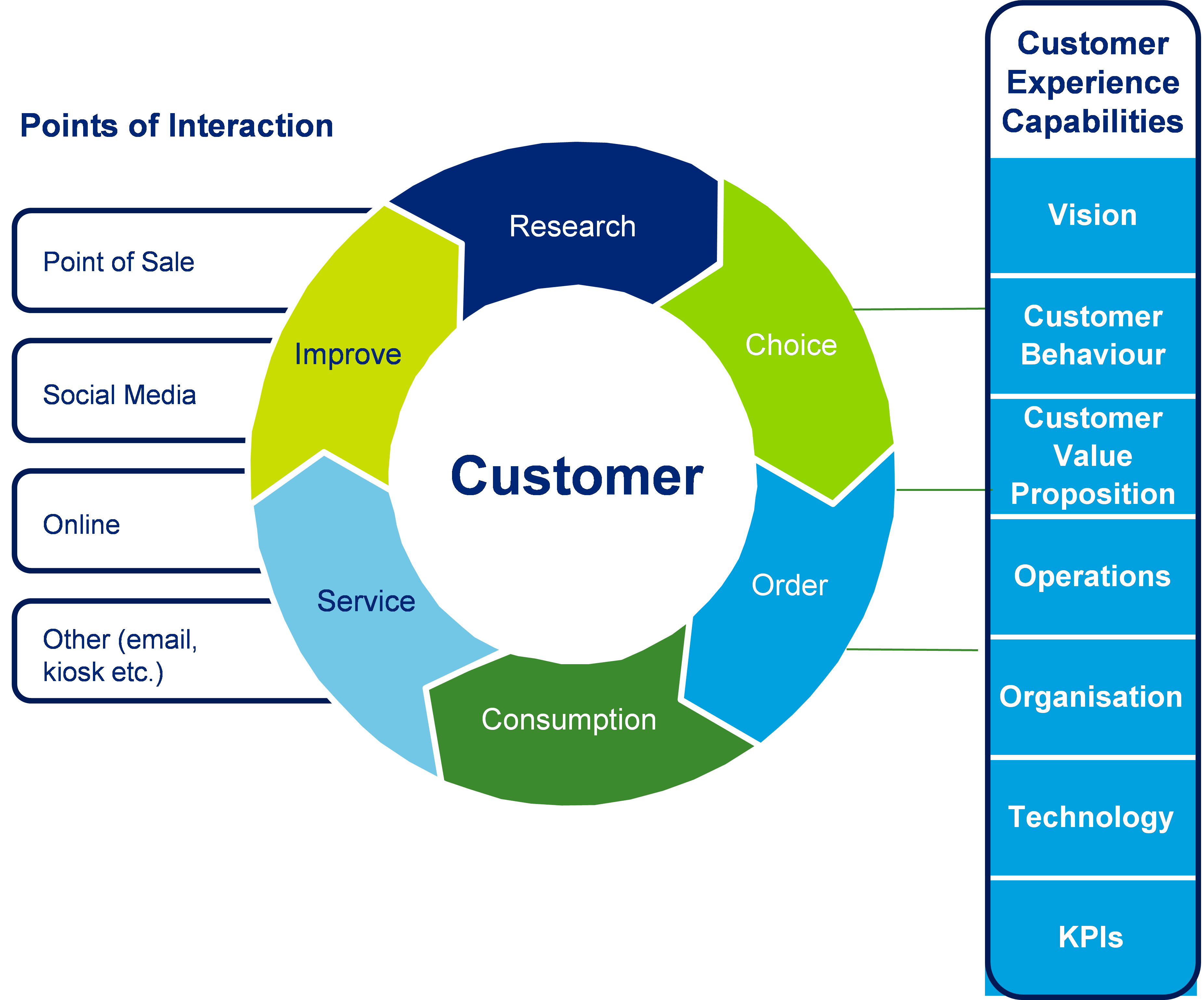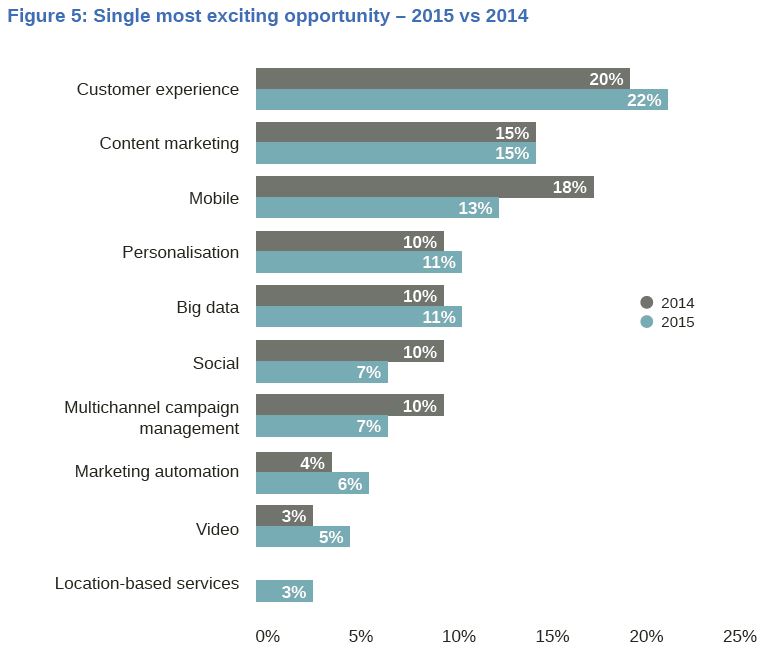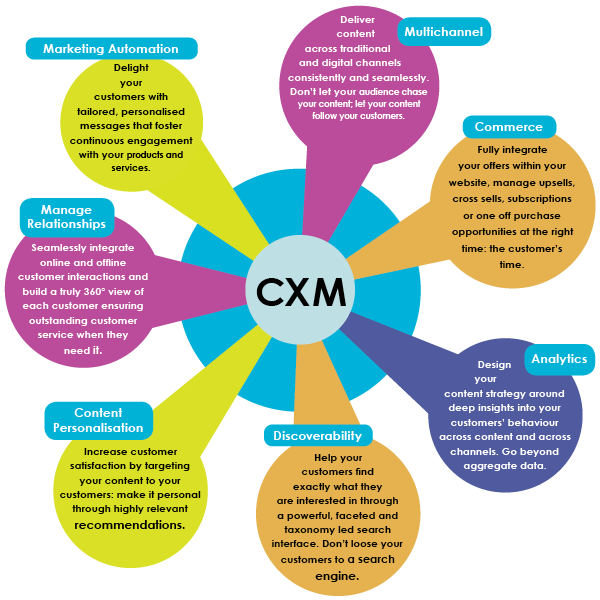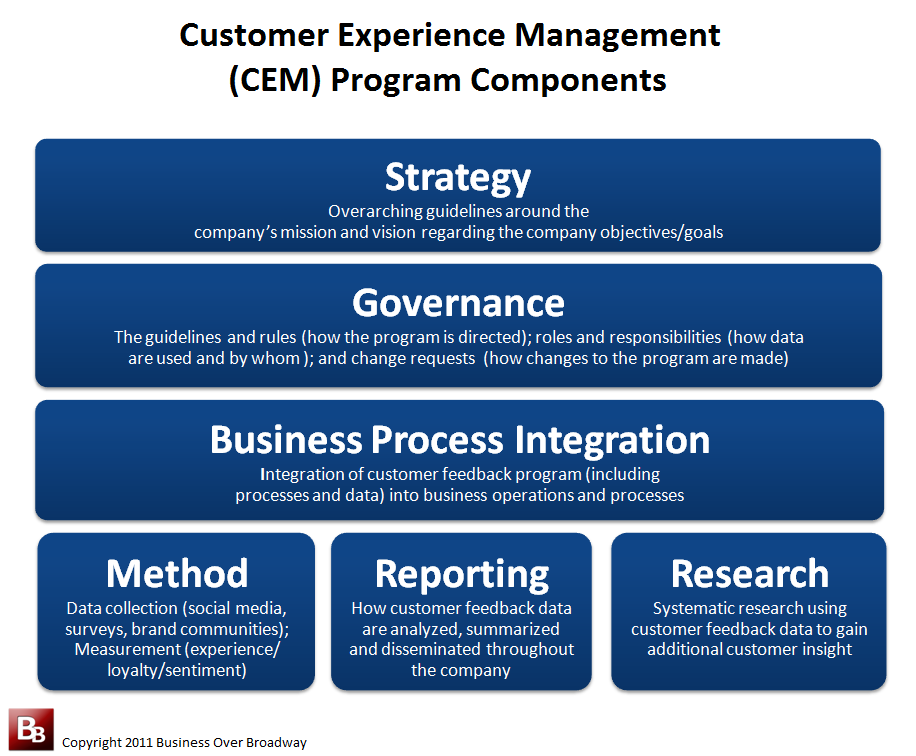In the age of social media and mobile digital devices, the greatest opportunity for marketers lies in how they can delight customers both online and offline.
Also known as customer experience management, it seeks to provide a holistic brand experience across all customer channels, going beyond traditional measures of customer satisfaction.
So what exactly is customer experience management and why does it matter in our digital heavy age?
Defining Customer Experience Management
Customer Experience Management (CEM or CXM) is an integral part of your customer’s brand experience. However, it isn’t just about communicating the right brand messages across advertising, sales and service channels.
While the efficient and effective management of service quality and technical support channels like hotlines and service counters are vital, CXM extends beyond reducing customer complaints and increasing compliments.
So what do we truly mean by the term Customer Experience Management?
Well, CXM is about engaging customers in the right way based on what he or she wants or needs at every stage of the customer journey. Effective CXM can be visualised as a positive and infinite loop (which extends as long as the customer’s lifetime) as shown below:
Oracle’s Customer Journey Loop (courtesy of Forrester)
CXM is the science of mapping and managing the entire gamut of processes a company uses to monitor, track, oversee and influence every interaction a customer has with the company. Covering the entire customer life cycle, it encompasses every single encounter the customer has with your brand.
Quoting Paul Robson, President of Adobe APAC (source: Digital Marketing Trends: Key Insights for 2015):
“Customer experience represents the entire range of interactions a customer might have with a business, covering a range of touch points from awareness and discovery, right through to purchase, use and ideally, advocacy. It’s a complex proposition for a business to serve up a consistent and excellent series of touch points across a life cycle that moves from real life to digital; from store front to website and social networks. But it’s a challenge that marketers in Asia are embracing.”
Customer Experience the “Most Exciting Opportunity”
According to Adobe and Econsultancy’s Digital Marketing Trends 2015 report, customer experience was highlighted amongst leading marketers around the world as the “most exciting opportunity” for marketers in 2015. It leapfrogged digital marketing heavyweights like mobile marketing, content marketing, social media marketing and big data.
The relative importance of customer experience can be seen in the chart below (courtesy of Adobe-Econsultancy):
CXM Market Projected to Hit US$8.39 Billion in 2019
According to a study cited by Market Watch, the Customer Experience Management market is projected to grow from US$3.77 billion in 2014 to US$8.39 billion in 2019.
This represents a whopping Compound Annual Growth Rate (CAGR) of 17.3% from 2014 to 2019!
Segmented by type, touch point, organization size, region and vertical, IT tools in the CEM market covers enterprise feedback management, web analytics, speech analytics, and text analytics. These are usually applied on touch points like company websites, branches/stores, call centres, and social media channels.
Key technology providers in this space include Adobe Systems Incorporated, Alcatel-Lucent, Amdocs Limited, Cisco Systems Inc., Ericsson, Huawei, Hewlett-Packard Company, IBM, Nokia Siemens Networks and Oracle Corporation.
Integrating Customer Experience with Marketing
Embodying every cross-channel interaction with the brand, CX has the potential to transform corporate cultures and unite all departments. The end goal? Provide optimal and seamless end-to-end customer experience.
From a systems perspective, a holistic view of CXM normally includes Customer Relationship Management (CRM) and Social CRM (see The Social Customer).
A good way to visualise how CXM can be woven into various marketing functions is shown below:
Courtesy of De Webdeler
As seen in the infographic above, CXM mandates companies to foster a deeper and more intimate knowledge of their customers through all marketing and service touch points.
Stretching across multiple channels, customer experience here includes customer relationships, sales transactions, marketing analytics, SEO, and personalised content. It seeks to make company or brand-customer engagement feel intimate and personalized for each and every customer using data and customer intelligence.
By informing companies what their customers prefer or behave – often in real time – CXM helps them to tweak and optimize the customer experience, reduce cost, foster loyalty, trigger advocacy and enhance long-term customer value.
Managing Customer Experience Strategically
Naturally, customer experience management isn’t the same across all industries or organisations.
Some companies are able to share customer feedback and transactional data across the enterprise. They may also use customer insights to drive company strategy or influence employee reward and compensation schemes.
Others, however, may limit such data and insights to key managers or executives.
From a strategic perspective, companies need to structure their entire organisations to take advantage of the rise in CXM. A good way to structure a company’s CXM programme is to break it down into six key components as suggested by Customer Think (see diagram below).
Customer Experience Management Framework (courtesy of Customer Think)
From the diagram above, we can see that there are six key elements to a CXM programme framework:
- Strategy: How companies incorporate CXM into long-term plans/vision/mission to achieve objectives and goals
- Governance: The formal policies (rules, roles and requests) governing how the CXM programme should be implemented
- Business Process Integration: Embedding CXM processes/data into all other business operations
- Method: How customer feedback is collected, measured and monitored
- Reporting: How customer feedback is analysed, synthesized and disseminated
- Research: Additional customer insight provided by deeper research into various forms of customer data (quantitative and qualitative)
Measuring Customer Experience Management
Last, but certainly not least, the impact of your customer experience initiatives needs to be measured.
Traditionally, customer experience measurements cover KPIs like the Net Promoter Score (NPS), Customer Satisfaction Index (CSI) and or primitive measures of complaints versus compliments. While these are useful for measuring the actual customer journey, they do not correlate directly to bottom line revenues.
To sharpen how we measure CEM, SandSIV proposes various holistic Customer Experience measures such as the following:
- Customer Lifetime Value
- Average Return per Unit
- Cost of Incident
- Average Cost of Handling
- First Call Resolution
- Churn Rate
On a higher level, Forrester Research has a tool to measure customer experience on a national level. From a survey of 46,000 consumers, the CX Index™ measures and ranks approximately 300 large US brands, across 17 industries. It seeks to provide the following:
- Measure the quality of experience and current loyalty levels.
- Identify the unique drivers that shape your customers’ experiences.
- Model different actions to predict their impact on customer experience.
- Use a decision framework to identify the best actions to produce the best results.
Naturally, what I’ve written above is just a short primer to what Customer Experience Management is. Watch this space as I dive more deeply into this topic in the weeks and months ahead.






3 Comments
Comments are closed.